Perth, Western Australia
Article for small group travellers considering Perth. For couples and solo travellers the article provides an insight to Kings park and the wildflowers of Perth and surrounds.
29 Mar 21 · 13 mins read

Discovering Perth, Western Australia
Perth is the capital and largest city of the Australian state of Western Australia, situated on and around the Swan River. The area had been the traditional land of the Noongar people for thousands of years before the first European explorers arrived from the early 17th century. In 1829, Captain James Stirling founded the city as the administrative centre of Britain’s Swan River Colony, named after Perth, Scotland, due to the influence of Stirling’s patron Sir George Murray, who had connections with the area. Development was slow in the early years, but eventually picked up significantly through the use of convict labour as well as multiple mining boom in other parts of Western Australia. Today it is Australia’s fourth-most populous city, home to a wide range of historic, cultural, and natural attractions that draw millions of tourists each year.
Odyssey Traveller conducts a tour of Perth as part of our small group Wildflowers Tour of Western Australia. This tour for senior and mature travellers travelling as a group or solo allows you to explore and learn about Australia’s Golden Outback and Western Australia’s unique wildflowers. We begin and end the tour in Perth, where we conduct a half day tour of Kings Park bushland home to 1,700 unique native species and a dazzling display of wildflowers in spring, as well as enjoy leisure time to explore the city. This article explores the city’s history and key attractions to assist your Perth tour.
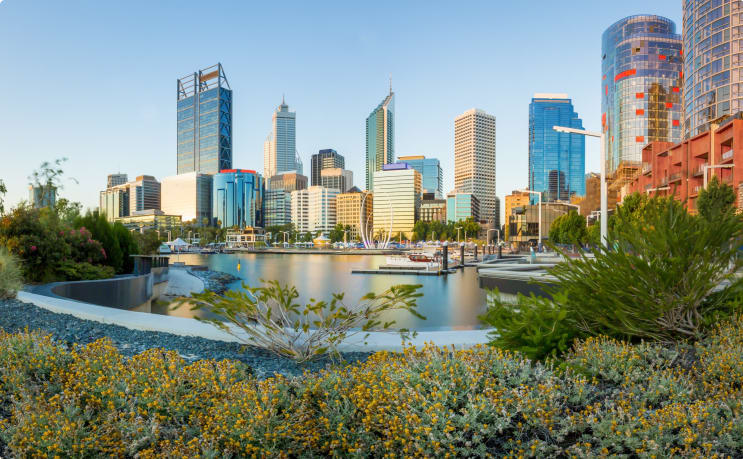
Aboriginal History
The original Indigenous inhabitants arrived in the area at least 38,000 years ago according to the carbon dating of ancient stone implements discovered near the Swan River. Noongar people occupied the southwest corner of Western Australia, including the area on which Perth now stands, which they called Boorloo.
Boorloo formed part of Mooro, country that stretched from the Swan River northwards beyond the limits of the current metropolitan area. This was the tribal lands of Yellagonga, whose group was one of several based around the Swan River, known collectively as the Whadjug. The Whadjug were in turn one of 13 or so linguistic blocks of the Noongar people.
The Swan River is a sacred place for the Whadjug. Their Dreamtime stories tell of two Wargal (giant water serpents) who created the river and surrounding landforms and water features and are now responsible for their maintenance.
As hunters and gatherers, the Noongar moved with the seasons, travelling inland in winter, then returning in late spring to capture game. The main sources of food were the sea, the river, and an extensive system of freshwater lakes along the coastal plains. These lakes were particularly important, providing them with both spiritual and physical sustenance. While the swamps to the north of the Swan River provided food, meeting places, shelter, and familiar hunting grounds.

From 1831, there were hostile encounters between European settlers and Noongars over land use and conflicting land value systems. The violence culminated in several executions and massacres, including the execution of Whadjug tribal chief Midgegooroo, the murder of his son Yagan and the massacre of the Pindjarep people.
Disposed from their traditional lands and with their tribes disintegrating, the Noongar people retreated to the swamps and lakes north of the Swan River, formally known by them as Boodjamooling. They would later come to be subjected to sometimes harsh and insensitive colonial rule, only recognised as people following changes in the laws during the 1960s.
European Exploration
European ships started accidentally arriving on the Western Australian coast en-route to Batavia (now Jakarta) in the early 17th century. Actual exploration of the area around present-day Perth commenced later in 1696 by the Dutch captain Willem de Vlamingh commanding three ships, the Geelvink, Nyptangh and the Wezeltje. Vlamingh anchored off Rottnest island on 29 December, giving it its name, before discovering and naming the Swan River (after the black swans he saw swimming there) on January 10 the following year.
A limestone bar and sandy shoals at the mouth of the river prevented his ships from sailing up it, so a sloop was sent out, which even so still required some dragging over the bar. They continued from here until reaching mud flats, probably close to the present-day Heirisson Island, forcing them to turn back. In all, Vlamingh was not impressed with the area.

Similar explorations followed in 1801 by the French and in 1822 by the British. But the Swan River’s sandbars, the many mud flats upstream, as well as the rough seas and dangerous reefs surrounding the Perth area all left unfavourable opinions about any potential settlement.
It was until 1827, with the exploration of Captain James Stirling, that a favourable opinion of the Swan River was expressed. In March, he spent 12 days exploring the area in his ship HMS Success, travelling as far upstream as the Ellen Brook junction. Accompanied by the botanist Charles Frasher, his report on the quality of the soil became instrumental in the decision to establish the Swan River Colony. This report would have been entirely different, however, if the party had gone far enough ashore to see that sandy soil characterised much of the land around the river.
Stirling is said to have been stunned by the beauty of the Swan River and fertile land around it. Upon his arrival back in England in July 1828, he begun to promote in glowing terms the agricultural potential of the area, proposing the establishment of a free settlement independent of the colony in New South Wales. Due to his reports, and fuelled by rumours that the French were planning on establishing their own penal colony in the western part of Australia, the British Colonial Office assented to the proposal in mid-October 1828.
Establishment of the Swan River Colony
Sent to claim the west coast of Australia for the United Kingdom, Captain Charles Freemantle landed on 2 May 1829 and declared the establishment of the Swan River Colony, with the first free settlers arriving in June that year. On August 12, the chopping down of a tree marked the official foundation of the City of Perth, the capital of the colony. This event is commemorated at this site by a plaque set in the footpath of Barrack Street.
Perth’s boundaries were defined by the Swan River to the south and east, by the promontory of Mount Eliza to the west, and by a chain of swamps and lakes to the north. The site was chosen for its access to fresh water and river transport, the availability of building materials, fine views of the Darling Scarp and the shelter offered by Mount Eliza from naval bombardment.
Perth was one of two separate townships of the colony, its role being the administrative and military hub. The other, Freemantle, was to be the port city and entry into the colony. As the fertile locations around Perth did not extend very farm from the Swan and Canning Rivers, the land was quickly settled. The most fertile locations were upstream from Perth, and so the district of Guildford was also settled in 1829.
The colony developed slowly in its first two decades. The poor and sandy soil and difficulty of clearing land to grow crops combined with a lack of investment made the progress of settling extremely difficult.
Nevertheless, over time other towns like Kelmscott and Mandurah were developed and in Perth a number of important buildings were established. The Round House, the oldest surviving building in the city was completed in 1831, providing the colony with its first prison. The Court House was opened in December 1836, doubling as a place of worship until St George’s Church was built in 1842. And in 1837 the colony’s first brewery, Swan Brewery, was established at the corner of Spring Street and Mounts Bay Road, near the base of Mount Eliza.
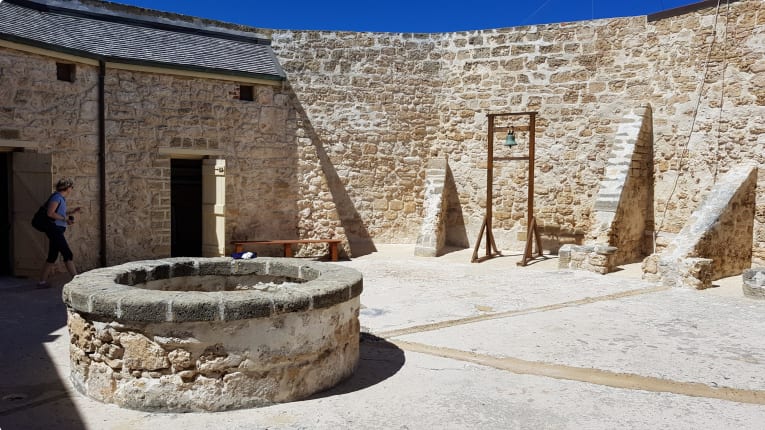
The Convict Era
Although the Swan River Colony as founded as a free settlement, due to the difficulties faced by the initial settlers, meagre growth, and a shortage of labour, appeals were made to Britain to send convicts to help. And so, in 1850 Perth became a penal colony., receiving an influx of over 9000 convicts over the next 16 years.
The convicts were involved in the construction of many public works that would shape the character of Perth, some remaining as historical sites until today. These were largely constructed in the Gothic style, the trend in England at the time, made of locally harvested clay bricks, mellow in colour and soft in texture. Well-known buildings constructed during this time include the Fremantle Prison, Government House, the Perth town Hall, the Cloisters, Perth Gaol, and the Swan River Mechanics’ Institute.
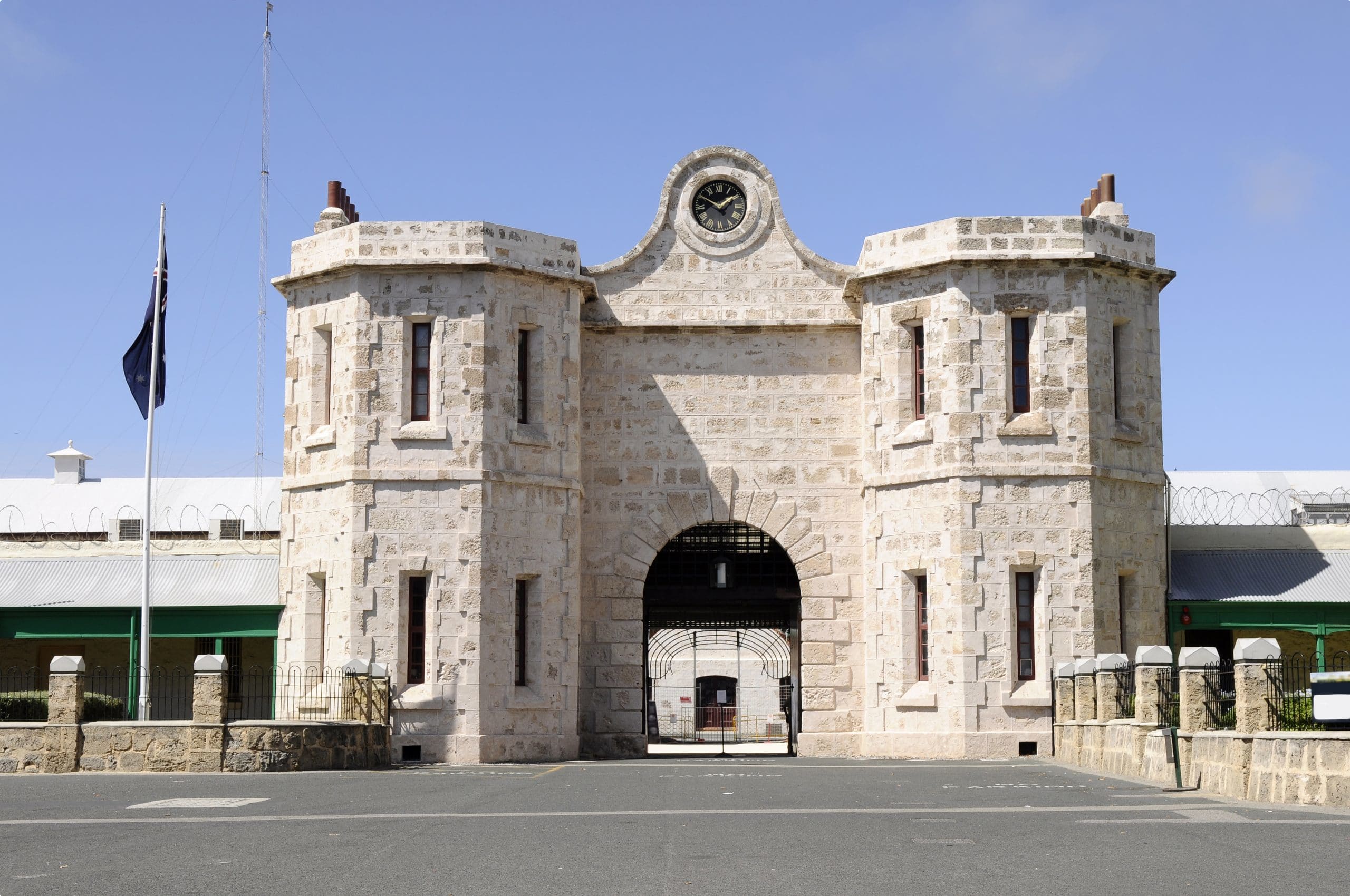
Perth officially gained ‘city’ status during this period, declared a Bishop’s See by Queen Victoria in 1856. Prospects of the colony were certainly improving, yet Perth’s underlying identity as a remote and rustic frontier town remained unchanged. The public architecture was still relatively small scale as befitting a new settlement. A village like atmosphere of scattered single- and two-story brick or stone residences surrounded by garden prevailed until changes came at the end of the nineteenth century.
Resource Booms & Growth of the City
It was in the later part of the nineteenth century, particularly the last two decades, that Perth city began to grow significantly for the first time. Government buildings continued to arise and shape the centre. The first Perth telegraph line from Adelaide was completed in 1877, vastly improving communications within the region. This in turn increased the growth of colonial media, such as the first weekly newspaper in Perth, The Western Mail, published from 1885. The foundation stone for the Perth railway was laid on 10 May 1880, and on 1 March 1881 the first suburban railway line opened, running from Fremantle to Guildford through Perth.
But it was the discovery of gold in the Kimberley, Murchison and Kalgoorlie regions in the 1880s and 1890s that most significantly shaped the development of Perth. The city became an important strategic base for the gold mining industry, as well as a hub for new immigrants arriving in Australia to work. In one decade (1891-1901) the population of the city tripled from just 8,447 to 27,553.
With the goldrush came economic prosperity, dramatically changed the physical nature of the city. By the beginning of the twentieth century, the city skyline was completely transformed, filled with elaborately styled multi-storey buildings, while populations spilled over into new suburbs that encircled the city.
To cope with the population growth, infrastructure, services, and facilities were expanded. In 1893, electricity generation was made available to the city of Perth, and a new railway line from Perth to Armadale was built in May to service the main agricultural regions and logging industry. In September 1899, the first electric tram services commenced, and the Perth Mint was opened later that year, still remaining an iconic site nowadays.
Perth experienced a second natural resources boom in the 1960s and ‘70s with the discovery of iron ore, nickel, petroleum, bauxite, natural gas and alumina deposits throughout the state. The wealth generated significantly transformed Perth into a modern city complete with its first skyscrapers.

The city stated hosting many large-scale events during this time, such as the British Empire and Commonwealth Games, Test Cricket matched, the Miss Universe competition, the defence of the America’s Cup, amongst others.
Rapid growth continued in the first decade of the 21st century due to another mining boon in Western Australia. As a hub for large mining operations Perth went through excessive economic development, becoming Australia’s fastest growing capital. New waves of migrants arrived to fill out gaps in the mining workforce, significant numbers arriving from the UK and South Africa, increasing the city’s population by 346,000 between 2001 and 2011. Major infrastructure projects completed during this time include the New MetroRail project, which effectively doubled the size of the Perth rail system, the Graham Farmer Freeway and Roe Highway.
Key Attractions
Perth continues to flourish today as one of Australia’s most beautiful and welcoming cities, and gateway to the wider attractions of Western Australia. Key attractions within Perth include:
King’s Park
Walking through the bushland of Kings Park, Perth, it would be easy to believe that you were in the bush, and not just five kilometres from the centre of Australia‘s fourth-biggest city. The largest inner-city park in the world, the 400-hectare Kings Park (that’s 60 hectares bigger than Central Park, New York!) is packed full of fascinating historical and natural sights, home to a diversity of native birds and flora.
Visit during September for a free festival displaying the state’s famed wildflowers, or year-round to follow the elevated Federation Walkway across a canopy of eucalyptus trees. Follow signs to see the state’s iconic trees, including karri, jarrah, native Christmas trees and pines, or spot plants from other Mediterranean climates such as South Africa and California.
Smack in the middle of the city, the park offers epic views of the Swan and Canning Rivers, Darling Ranges, Perth Water, and the city skyline. Enjoy cycling, birdwatching, and picnicking at this spot, or visit the State War Memorial, the park’s café, gift shop, Fraser’s restaurant, and the Kings Park Visitor Centre.
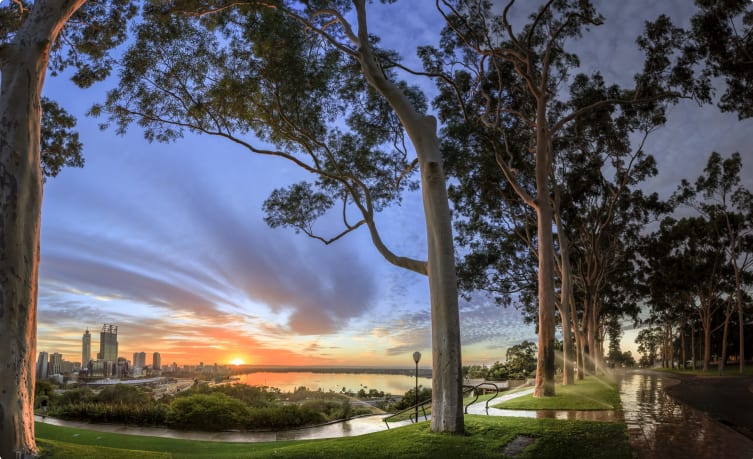
Swan River
The Swan River is a stunning waterway carving its way through the middle of the city. Over 130 species of fish inhabit the river, including bull sharks, catfish, rays and bream, as well as bottlenose dolphins in the estuary. Enjoy a day out boating, fishing, water-skiing, paddling, picnicking, or simply taking a walk along its banks.
Cruises along the river are also popular. Travel between Perth and the historic port of Fremantle to see the parklands along the water’s edge, as well as some of the posh houses of the riverfront suburbs. A day trip upriser to the fertile shores of the Swan Valley, Western Australia’s oldest grape-growing region, is also popular.
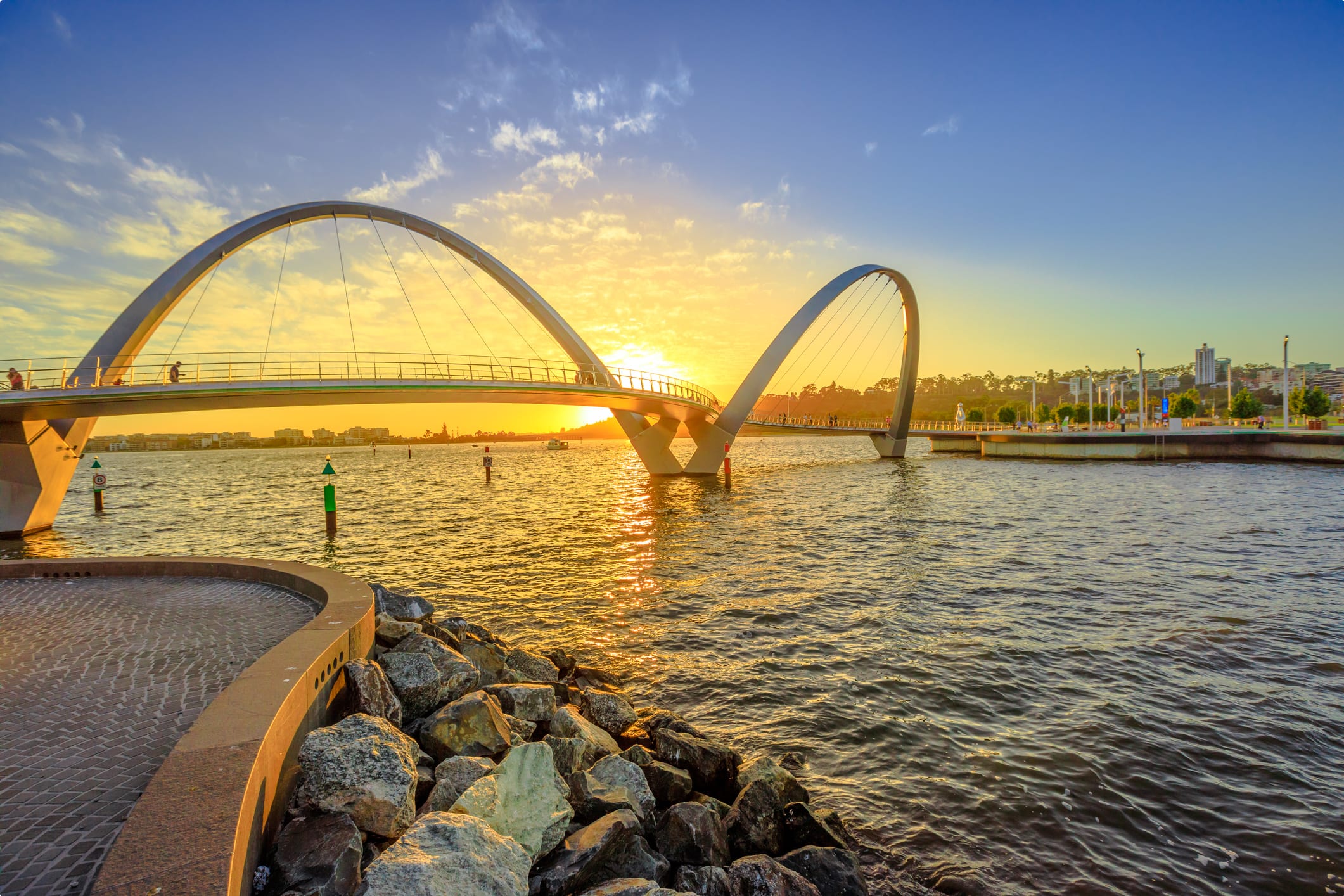
Cottesloe Beach
Lovers of ocean swims are spoilt for choice in Perth with 19 beautiful beaches stretching along the coastline. Less than a 15-minute drive from the city centre, Cottesloe is one of the most popular, with its turquoise water, pristine white sand, shady Norfolk pines and smooth terraced lawns.
Crystal clear waters and consistent swell make it a regular spot for swimmers, body boarders and surfers, while snorkelers are commonly found on the surrounding rocks and reefs. Out of the water, a buzzing boulevard of restaurants, cafes, and bars is the place to be seen. Enjoy breakfast or lunch during the day, or settle in for dinner and evening drinks by a sublime sunset over the Indian Ocean.
March is especially exciting as the annual Sculpture by the Sea outdoor exhibition transforms the beach into an incredible outdoor art gallery. But with a warm climate most of the year, any time really is a great time to visit Cottesloe.
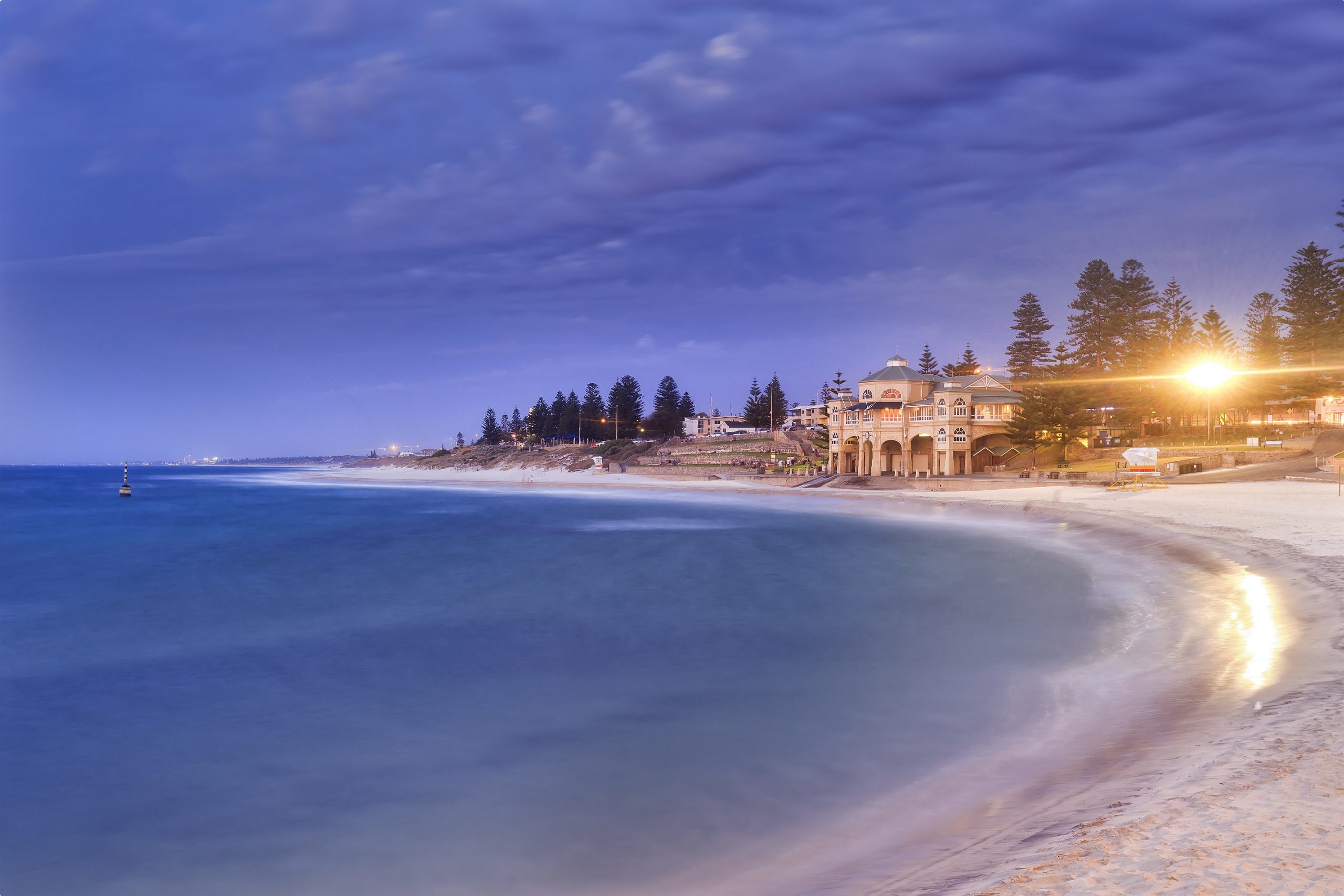
The Perth Mint
Built in 1899, the Perth Mint is the oldest gold mint in the world, offering a fascinating glimpse into the history of gold in Western History. Guided tours provide insight into the discovery of gold in Western Australia and the gold rushes that ensued in the 19th and 20th century. The Mint’s Gold Exhibition’s collection includes the world’s largest gold coin, weighing a whopping one tonne and worth a staggering $60 million, as well as gold nuggets, bars, and bullion. One can also enter the melting house and watch how pure gold is melted into solid bars.
Hillarys Boat Harbour
About 20 kilometres northwest of central Perth, Hillarys Boat Harbour is an expansive marina and tourist precinct gilled with restaurants, shops, and a range of attractions. And with bike paths, walkways, parks, and sheltered beaches, it is a perfect getaway spot for families. Ferries to Rottnest Island also depart from here.
The Aquarium of Western Australia is a key highlight on the harbour, showcasing the marine life and unique regions of Western Australia’s 12,000km coastline. Walk through the glass underwater tunnel and observe more than 200 species of marine animals, including manta rays, dolphins, and sharks.

Art Gallery of Western Australia
Founded in 1895, the Art Gallery of Western Australia houses and exhibits a broad collection of both Australian and international art dating from 1829 to the present day. Located within the Perth Cultural Centre, visitors can enjoy various exciting encounters with different styles ranging across historic, modern, contemporary, Aboriginal and world-wide artforms, with a special emphasis on the artworks of the Indian Ocean Rim and Australia. Eminent artists include Arthur Boyd, Russel Drysdale, Sidney Nolan, Hans Heysen, and Frederick McCubbin, amongst others.
Tour of Perth
Odyssey Traveller visits Perth as part of our Wildflowers Tour of Western Australia. For wildflower enthusiasts this is an opportunity to see, learn, and photograph a collection of Western Australia’s unique wildflowers on a 16 day wildflower escorted tour for senior and mature travellers. Travelling in a small group of up to 15 people, you will be accompanied by a tour guide as well as a botanical guide on certain days to assist with discussion and identification of the collection of Western Australian wildflowers seen. We travel along the west coast through the wheatbelt and across the natural landscape of the golden outback plains, walk trails in the National park(s), deserts and salt lakes, and see ancient granite outcrops, wild woodland, and then some of the brightest white sand beached in the world on the South West coast.
For those interested in seeing more of Western Australia, Odyssey Traveller is pleased to announce our small group tour of the Kimberley. This tour for mature and senior travellers, couples and solo travellers, of up to 12 people leave at the best times to visit the Kimberley: the dry season, June to September, or at the end of the wet season in April and May when the landscape is lush and the gorges – Bell Gorge, Cathedral Gorge – and rivers – Gibb River, Fitzroy River, and Tunnel Creek – all flow with water. Seeing masses of water flow in a place where the landscape is dry for most of the year is one of the delights of a trip in the Australian outback.
On this small group tour of the Kimberley, we learn about the unique adaptations and management approaches that have ensured a sustainable occupation for Indigenous Australians for over 40 000 to 65 000 years. On each of our Kimberley outback tours, these stories and geological features are a crucial part of our learning and exploration of the region. The remote location of the Kimberley has given it a long history of Aboriginal civilisations to learn about, long separated from European and Asian cultures (with the exception of the Portuguese crash-landing on the Kimberley Coast during the 17th century race for spices!).
Odyssey Traveller has been serving global travellers since 1983 with educational tours of the history, culture, and architecture of our destinations designed for mature and senior travellers. We specialise in offering small group tours partnering with a local tour guide at each destination to provide a relaxed and comfortable pace and atmosphere that sets us apart from larger tour groups. Tours consist of small groups of between 6 and 12 people and are cost inclusive of all entrances, tipping and majority of meals. For more information, click here, and head to this page to make a booking.
Articles about Australia published by Odyssey Traveller:
For all the articles Odyssey Traveller has published for mature aged and senior travellers, click through on this link.
External articles to assist you on your visit to Western Australia:
Related Tours
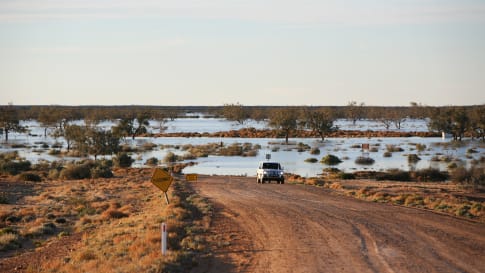
65 days
MarLong tour of Australia for a small group
Visiting New South Wales, Northern Territory
Small group tour for senior couples and solo travellers touring Australia. Travelling through the outback and visiting many of the famous sights as well as off the beaten track locations. Learn about the history of the people who explored the deserts, from indigenous communities to Europeans, as well as Burke and Wills, visit White Cliffs, Marree and far north Kakadu and the Kimberley.
From A$48,995 AUD
View Tour
days
May, Jun, Jul, Aug, SepSmall group tour of Australia's Kimberley
Visiting Western Australia
Escorted small group tour of the Kimberley. We explore and visit The Bungles, Bell Gorge, Mitchell plateau & Halls Creek in the dry season. Amazing landscapes intertwined with Aboriginal communities resident more than 45,000 years.
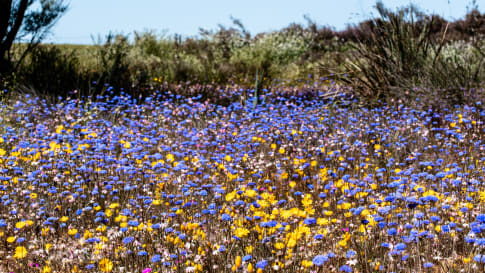
15 days
Aug, SepWildflowers tour of Western Australia
Visiting Western Australia
Escorted small group tour for senior and mature travellers as a couple of solo traveller. Upto 12 people of WA's Wildflower regions including Esperance and the Fitzgerald river National park. Local guides and program leader share knowledge about this fascinating region whilst in bloom.
From A$12,850 AUD
View TourArticles about Western Australia

Aboriginal Art
Senior and mature couples and solo travellers remain curious but often informed about the role Aboriginal art plays in the indigenous community and the various styles. This article seeks to provide a platform for this collection of small group tours of upto 15 people into the Australian outback where often Aboriginal art styles are encountered.
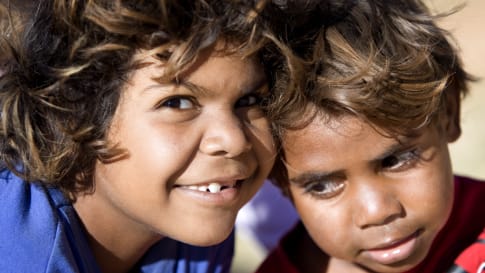
Aboriginal Kinship systems
Article about Aboriginal kinship to assist small group tours in Australia understanding Ancient aboriginal society and the contemporary view. Kinship influences the relationships including aboriginal trading routes.

Aboriginal Rock Art in the Kimberley, Australia
The Kimberley is explored on a small group tour for mature and senior travelers, couples or singles. Both Aboriginal community is studied and an appreciation of the wet and dry seasons. This guide on the Kimberley assists the traveler as you start from Broome and travel round via Halls creek and Purnunulu national park over some 17 days in a group of up to 12 people.
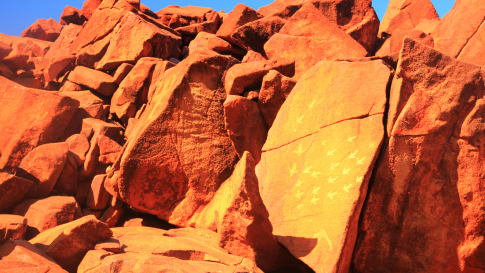
Aboriginal Stone Arrangements
Aboriginal stone arrangements are a form of rock art deliberately placed in position by Indigenous Australians and associated with spiritual ceremonies or utilitarian purposes. This article for mature and senior travellers provides and couples and solo travellers with and understanding and appreciation of the Ancient historic landscapes they are travelling though on a small group tour.

Albany and ANZAC, Western Australia
Albany is the southernmost town of Western Australia. The Wildflower small group tour visits this historic town with a strong ANZAC connection. Albany before the Swan River colony, later to be known as Perth.

Albany Fish Traps, Western Australia
Articles supporting small group tours for senior and mature travellers, couples and solo travelers learning about Aboriginal and colonial history. A large body of archaeological sites specifically associated with Aboriginal estuarine fishing and fishtraps lie scattered across the southwest of Western Australia.
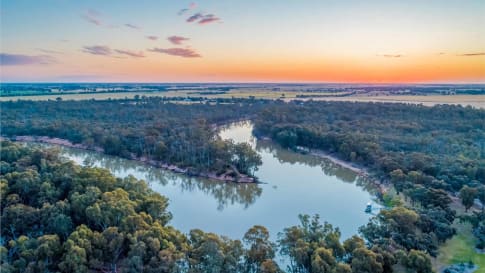
Appreciating Australian River Systems
Appreciating the linking of the river network into the Australian, history, culture and landscape on a small group tour for mature and senior travellers of couples or solo travellers is an integral part of understanding the continent of Australia and Aboriginal settlement.

Esperance and Wildflowers, Western Australia
The historic town of Esperance amongst wildflower enthusiasts is a must see. Each spring the town and the surrounding South West eco-region is filled with bursting colour overtaken by blooming wildflowers.

Halls Creek, Western Australia
Halls Creek an important stop on our Small group tour of the Kimberley. We learn about the gold rush on this tour for mature and senior travellers, couples and singles.

Kings Park, Perth
Perth hosts the biggest inner-city park in the world, the 400 hectare Kings Park, with 6 million visitors a year. As part of the Wildflower small group tour we visit and learn about the endemic plant collection in the park.

Kununurra, Western Australia
Explore the sights and history of Kununurra, with its spectacular lakeside beauty and outback charm, Kununurra is one of the Kimberley's most popular highlights. Odyssey offers small group tours for mature and senior travellers, couples, and solo travelers to Australia and Western Australia.

Lake Argyle, Australia
Understand why Lake Argyle exists before joining a small group package tour for mature and senior travellers of Western Australia's Kimberley region in the preferred dry season. Limited to 12 travellers for your peace of mind we learn about the landscapes and the aboriginal stories often via the rock art in far North.
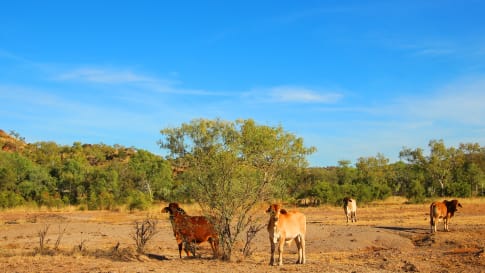
Pastoral Pioneers of the Kimberley, Western Australia
Learn about Pastoral Pioneers on a Western Australia small group tour for seniors into the outback for senior and mature couples and solo travellers.
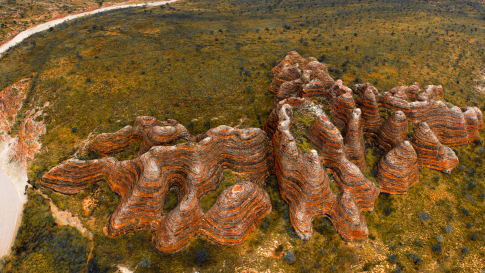
Purnululu National Park, Australia
Read about one of the most remote World heritage sites on Earth. Odyssey takes you to visit as part of a small group package tour for mature and senior travellers in the Kimberley for couple and single travelers We travel in the dry season from Broome via Lake Argyle to this National park.

The Australian Outback: A Definitive Guide
Explore learn and consider what is the outback in this article. For mature and senior travelers considering joining a small group package tours into the outback to see, learn and explore about this unique place, not only the landscape but the Aboriginal approach to living. On each of the tours for couples and the single traveler you learn something different but fascinating, from Outback Queensland, the Flinders, Broken Hill and the Kimberley and the wildflowers all contribute to this question, what is the outback?
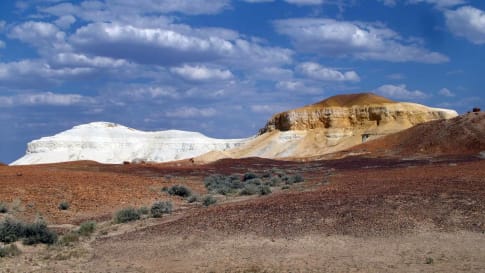
The Kimberley: A Definitive Guide
This article supports the small group package tours for mature and senior travellers, couples and solo travellers to Western Australia's Kimberley region. Learn about the wet and dry seasons and the fascinating Aboriginal history as well as the Bungle Bungles, Lake Argyle, Halls creek and resort of Broome.

Unique wildflowers of Western Australia
Western Australia becomes home to one of the world's most incredible collections of wildflowers. The state is home to more than 12, 000 species of wildflower - 60% of which are only found in Western Australia. Join Odyssey's small group wildflower tour.
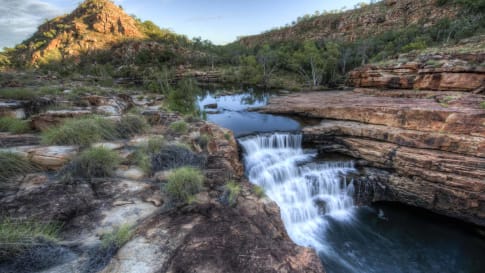
Wet and dry seasons in the Kimberley, Australia
Learn about the wet and dry season in the Kimberley to support your understanding of the Aboriginal communities lifestyle as you explore on a small group package tour for mature and senior travelers exploring as a couple or solo traveller. Read our peace of mind statement for post covid-19 travel.

Wildflower Way, Western Australia
Wildflower Way itself runs 309 kilometres from Dalwallinu, north of Perth, going north and west to the coast of Geraldton, covering 21 meaningful sites developed to educate travellers. This small group tour for mature travellers of Wildflowers visits wildflower way.
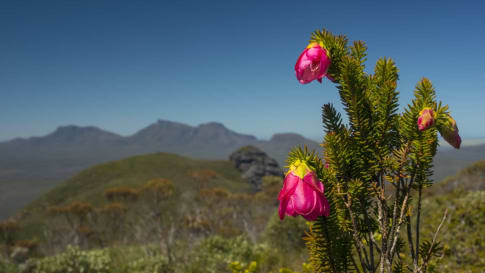
Wildflowers of Mt Barker and Stirling Range, Australia
The town of Mount Barker and the nearby Stirling Range National Park are one of the best places in Western Australia to see the state's incredible collection of wildflowers, that we visit on this small group tour of Western Australia Wildflowers.



